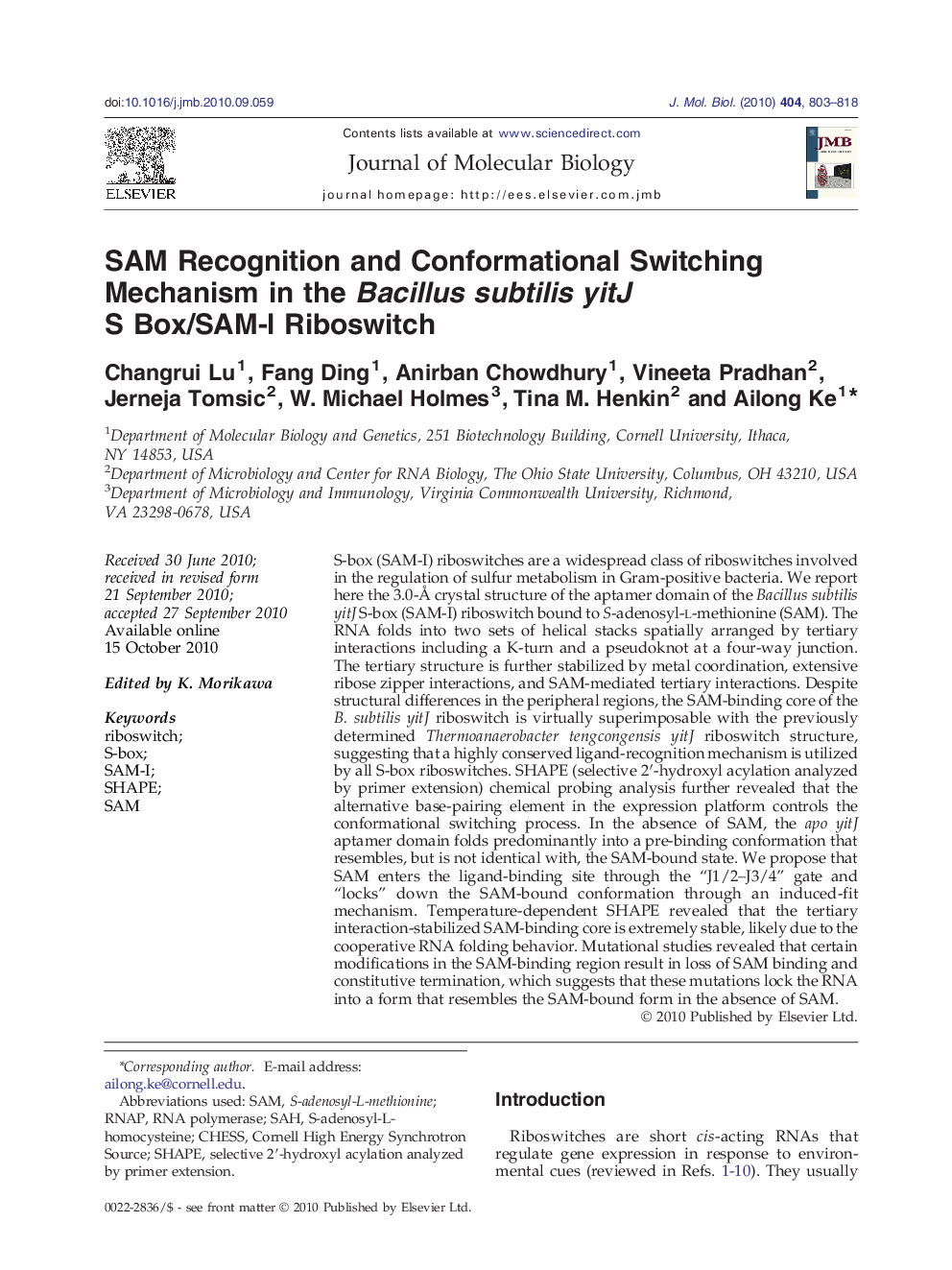| کد مقاله | کد نشریه | سال انتشار | مقاله انگلیسی | نسخه تمام متن |
|---|---|---|---|---|
| 2185403 | 1095978 | 2010 | 16 صفحه PDF | دانلود رایگان |

S-box (SAM-I) riboswitches are a widespread class of riboswitches involved in the regulation of sulfur metabolism in Gram-positive bacteria. We report here the 3.0-Å crystal structure of the aptamer domain of the Bacillus subtilis yitJ S-box (SAM-I) riboswitch bound to S-adenosyl-l-methionine (SAM). The RNA folds into two sets of helical stacks spatially arranged by tertiary interactions including a K-turn and a pseudoknot at a four-way junction. The tertiary structure is further stabilized by metal coordination, extensive ribose zipper interactions, and SAM-mediated tertiary interactions. Despite structural differences in the peripheral regions, the SAM-binding core of the B. subtilis yitJ riboswitch is virtually superimposable with the previously determined Thermoanaerobacter tengcongensis yitJ riboswitch structure, suggesting that a highly conserved ligand-recognition mechanism is utilized by all S-box riboswitches. SHAPE (selective 2′-hydroxyl acylation analyzed by primer extension) chemical probing analysis further revealed that the alternative base-pairing element in the expression platform controls the conformational switching process. In the absence of SAM, the apo yitJ aptamer domain folds predominantly into a pre-binding conformation that resembles, but is not identical with, the SAM-bound state. We propose that SAM enters the ligand-binding site through the “J1/2–J3/4” gate and “locks” down the SAM-bound conformation through an induced-fit mechanism. Temperature-dependent SHAPE revealed that the tertiary interaction-stabilized SAM-binding core is extremely stable, likely due to the cooperative RNA folding behavior. Mutational studies revealed that certain modifications in the SAM-binding region result in loss of SAM binding and constitutive termination, which suggests that these mutations lock the RNA into a form that resembles the SAM-bound form in the absence of SAM.
Graphical AbstractFigure optionsDownload high-quality image (112 K)Download as PowerPoint slideResearch Highlights
► The B. subtilis yitJ riboswitch structure are conserved with that of the T. tengcongensis.
► SAM-independent tertiary interactions mediate ligand-induced conformational changes.
► Thermal melting of the S-box RNA bound to SAM reveals differential stability of structural elements.
Journal: Journal of Molecular Biology - Volume 404, Issue 5, 17 December 2010, Pages 803–818